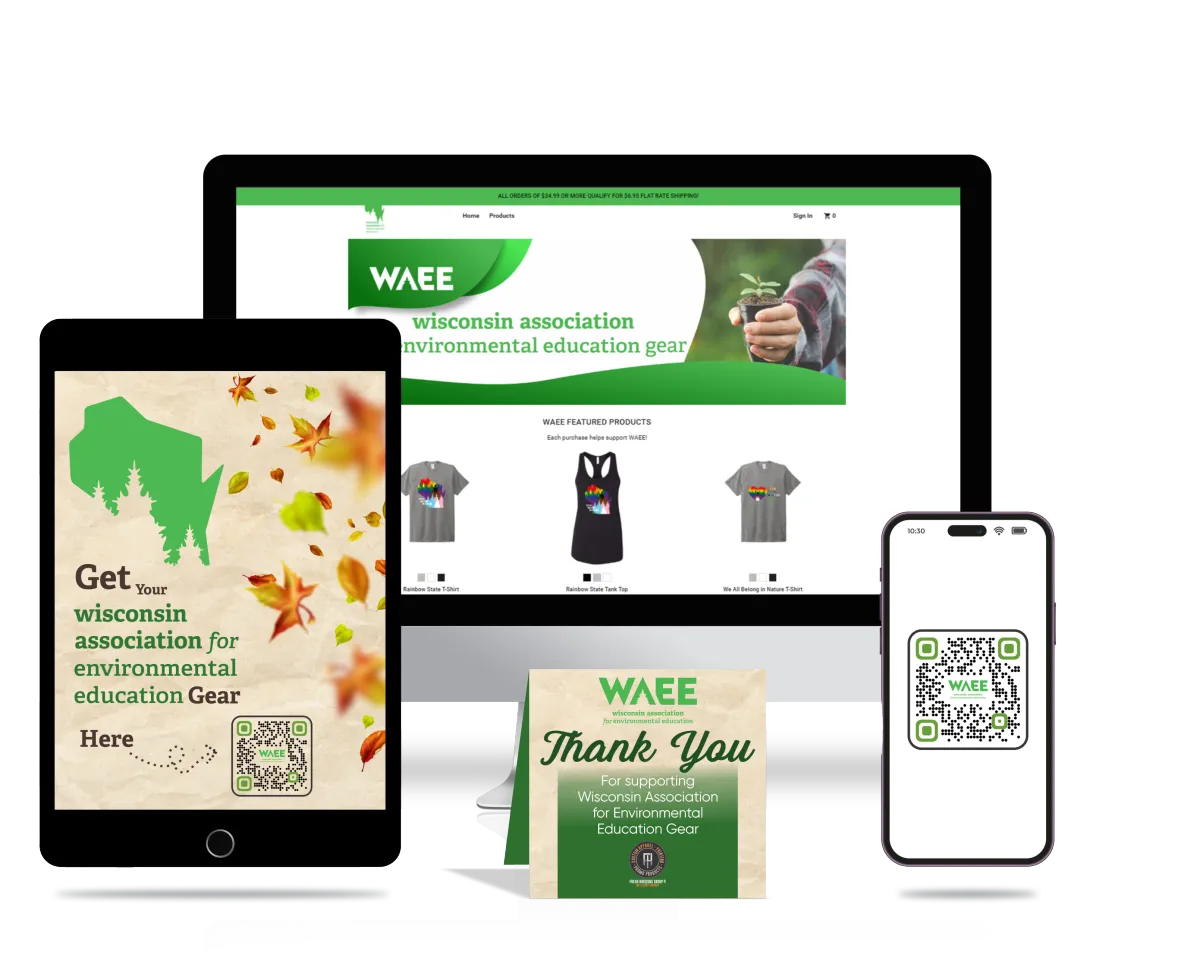Elevate Your Brand
Elevating Brands and Expanding Horizons

Elevating Brands and Expanding Horizons

Tired of feeling frustrated with your marketing efforts? Fresh Horizons has the solution with our 3 core tools: Digital Marketing, Custom Apparel, and Promotional Products. Say goodbye to frustration and hello to success with Fresh Horizons.

Get results that matter with our powerful marketing tools. From CRM and websites to sales funnels, missed call text back, and email campaigns - we've got you covered. Elevate your business today!

Elevate your brand and team spirit with custom apparel. Impress clients, instill pride in employees, and stand out from the competition. Let us help you make a lasting impression.

Promote with ease and confidence! Our access to over 1 million promotional products ensures you'll find the perfect fit for your brand, no matter the occasion. Let us help you create lasting recognition today.

Revolutionize Your Marketing with Our Powerful Technology.
Is it time to take your marketing game to new heights? Fresh Horizons Group has got you covered with a suite of powerful tools that will make your competitors green with envy. From stunning websites and killer sales funnels to email campaigns that pack a punch, we've got all the tricks up our sleeve to generate leads, boost conversions, and keep your customers coming back for more. Say hello to success!
Ready to skyrocket your business like never before? With Fresh Horizons Group, you're not just getting snazzy websites and killer sales funnels - you're investing in a future of unstoppable growth. We'll help you magnetize new customers, make your competitors eat your digital dust, and turn your one-time buyers into die-hard fans. So strap in, and let's ride the wave to success together!
Discover a treasure trove of business and marketing insights on Fresh Horizons Group's blog.
From captivating articles to expert advice, unlock the secrets to success and stay ahead of the competition. Join the conversation today!

Asking AI for precise answers begins with crafting prompts that balance clarity, context, and structure to guide large language models toward actionable outputs. This guide reveals how to ask AI chatbots and ask AI systems the right way by exploring core principles of prompt engineering, advanced techniques for deeper reasoning, task-specific strategies, troubleshooting common pitfalls, chatbot communication best practices, template-driven examples, and performance measurement methods. You will learn how clarity and specificity improve accuracy, why context and role definitions matter, which advanced prompting patterns unlock reasoning, how to tailor prompts for content creation or data analysis, and how to detect hallucinations or ethical concerns. By following these tips and techniques, you will transform every AI interaction into reliable, high-value responses.
Effective AI prompts are structured instructions that guide a language model to interpret user intent precisely, ensuring relevant, accurate responses that align with your goals. The foundation of prompt engineering rests on four pillars—clarity, context, role definition, and output format—that collectively optimize AI understanding and usability.
Effective prompt engineering relies on clarity, context, role definition, and output format to optimize AI understanding and usability. These principles help guide language models to interpret user intent precisely, ensuring relevant and accurate responses that align with user goals.
Brown, T. B., Mann, B., Ryder, N., Subbiah, M., Kaplan, J., Dhariwal, P., ... & Amodei, D. (2020). Language models are few-shot learners. Advances in neural information processing systems, 33, 1877-1901.
This research provides foundational knowledge on how language models function and how to effectively interact with them through prompt engineering.

Clarity and specificity in prompts eliminate ambiguity by narrowing the AI’s focus to the exact details, boosting response accuracy and reducing off-topic content. When a prompt clearly states what information you need and the scope you expect, the model can prioritize relevant data rather than guess at broad requests.
Do’s and Don’ts of Prompt Clarity:
Do specify precise tasks (e.g., “Summarize the top three benefits of renewable energy.”).
Don’t use vague verbs (e.g., “Tell me about energy.”).
Do include quantitative targets (e.g., “List five key statistics.”).
Don’t mix multiple questions in one sentence.
Clear prompts minimize back-and-forth iterations and set the stage for richer responses. Introducing context builds directly on this precision to ensure the AI has background information before diving into details.
Providing ample context enriches a prompt by embedding relevant background information, which enables the AI to tailor responses to your requirements and avoid generic answers. Context acts as an attribute of a prompt that frames the setting, audience, or prior steps, guiding the AI’s selection of facts or style.
EntityAttributeValuePromptContextProject details, audience profile, previous conversationAI ResponseRelevanceAligns with specific scenario and user needsUserIntentClearly communicates objectives
Incorporating context ensures the response format and content align with your objectives, setting the stage for more nuanced role definitions in the next section.

Defining the AI’s role or persona assigns a clear perspective—such as “technical editor” or “marketing strategist”—that shapes tone, depth, and domain focus to match your needs. Role-playing prompts turns the model into a specialized assistant, improving the relevance of terminology, reasoning style, and examples provided.
For example, instructing “Act as a data scientist and explain these results” signals the AI to use analytical language and statistical reasoning. Assigning a persona streamlines how the model prioritizes knowledge domains, preparing you to specify output formats that suit your workflow.
Specifying an output format ensures the AI structures its response in a way that’s immediately usable, whether as a list, table, summary, or code snippet. Output format acts as a property of the prompt that defines how information should be organized for quick consumption or further processing.
Common output formats include:
List of bullet points for concise takeaways
Table with columns for comparison or categorization
Step-by-step numbered instructions
Brief paragraph summary highlighting main points
When you specify format upfront, the AI’s response aligns with your preferred presentation, reducing the need for manual reformatting and paving the way for advanced prompting techniques.
Few-shot prompting, which involves providing the AI with a small set of input-output examples, is a technique that helps the AI learn the desired structure and style before the user issues their real request. This method activates pattern recognition, guiding the AI to replicate formatting, tone, and logical structure.
Radford, A., Wu, J., Child, R., Luan, D., Amodei, D., & Sutskever, I. (2019). Language models are unsupervised multitask learners. OpenAI.
This study supports the use of few-shot learning as a method to improve the performance of language models, which is a key component of effective prompt engineering.
Include labeled examples: Example Input: “List three nutrient-rich foods.”Example Output: “1. Spinach – iron, vitamins A and C…”
Clarify alignment: “Following these examples, list three time-management techniques.”
Few-shot prompts reduce ambiguity and set clear expectations for response format and depth, leading to more consistent performance across varying queries.
Chain-of-thought prompting encourages the AI to reveal its internal reasoning steps, improving answer accuracy for complex problems by breaking tasks into sub-steps. This technique transforms the prompt into a reflective process, guiding the model to outline its logic before delivering the final answer.
For example:
Step 1: Identify key variables.
Step 2: Analyze relationships.
Step 3: Draw conclusions.
By requesting step-by-step analysis, you anchor the AI’s thought process, enhancing transparency and reducing errors in domains like mathematics, coding, or strategic planning.
Iterative refinement uses cycles of feedback—reviewing AI outputs, adding clarifications, and re-asking—to progressively fine-tune responses toward your ideal outcome. Feedback loops act as actions that refine both prompt and response, ensuring continuous improvement in accuracy and relevance.
Process flow:
Submit initial prompt.
Evaluate output for gaps.
Provide targeted feedback (e.g., “Expand on point 2 with data examples.”).
Resubmit refined prompt.
This loop closes the gap between expectation and delivery, guiding the AI through incremental adjustments that sharpen final outputs.
Negative constraints instruct the AI on what to avoid, establishing boundaries that prevent undesired or off-topic content. Guardrails function as explicit filters—such as “Do not include marketing jargon” or “Avoid speculation”—that maintain response quality and focus.
Example constraints:
Exclude bullet points.
Do not reference external websites.
Avoid assumptions beyond provided data.
AI supports creative tasks by generating outlines, suggesting headlines, and refining drafts with editorial feedback.
A content creation prompt might specify tone, target audience, and word count:
“Act as a copywriter and draft a 150-word blog introduction on sustainable living with a friendly tone.”
By defining role, context, and format, you harness AI for ideation, drafting, and polishing in one flow.
AI accelerates data analysis by summarizing datasets, extracting trends, and generating hypotheses based on supplied figures.
A data prompt should include dataset description, analysis objectives, and desired output format (e.g., chart summary or bullet list).
“Analyze this sales table by region and list top three growth drivers.”
Contextualizing data parameters and specifying analysis steps ensures the AI provides actionable research insights.
Problem-solving prompts guide AI to explore alternatives, weigh pros and cons, and recommend decisions based on criteria you outline.
“Assume you are a project manager evaluating two software vendors by cost, scalability, and support. Compare and recommend one.”
This structured request leads to a comparative analysis table and final recommendation, supporting strategic decision making.
AI can create quizzes, explain complex concepts, and generate study plans when prompted with learning objectives and student profiles.
“Create a five-question quiz on photosynthesis for high-school biology students, including answers and brief explanations.”
By specifying audience level and assessment style, you transform AI into a personalized tutor for diverse educational needs.
Avoiding vagueness requires explicit detail on scope, format, and objectives, thereby reducing misinterpretation by the AI.
Always define:
What exactly you want (scope).
How you want it delivered (format).
Any boundaries (word count, style).
Clear prompts prevent generic responses and keep the AI focused on your exact requirements.
AI hallucinations occur when the model fabricates information or cites nonexistent sources; detection requires fact-checking and source validation.
Mitigation strategies include:
Instructing “Cite credible sources only.”
Requesting “Answer based on provided data.”
Manually verifying facts against trusted references.
Rigorous fact checks and source constraints safeguard response integrity and reliability.
Ethical prompting ensures outputs avoid bias, respect privacy, and adhere to fairness standards, fostering responsible AI use.
Key guidelines:
Do not prompt for disallowed or harmful content.
Avoid reinforcing stereotypes by specifying inclusive language.
Be transparent about AI limitations when necessary.
Ethical guardrails maintain trust and promote socially responsible AI interactions.
Staying current involves monitoring AI research blogs, subscribing to industry newsletters, and experimenting with new models or features.
Regularly review release notes from leading providers and incorporate emerging techniques—such as multimodal inputs or agentic frameworks—into your prompts.
Continuous learning ensures your prompting skills evolve alongside AI capabilities.
Structuring questions as complete, concise sentences with a clear ask and any necessary context directs the chatbot to focus on your priority.
Begin with “Please explain,” “List,” or “Compare” and include any relevant background in the same message to avoid context gaps.
User intent frames the chatbot’s response style—whether informational, conversational, or transactional—and aligning prompts with your goal yields more targeted answers.
Explicitly stating intent, such as “I need a summary” versus “Help me craft an email,” signals the model to adapt tone and depth.
Providing in-conversation feedback—praising correct points or correcting mistakes—guides the chatbot toward better performance in real time.
Statements like “That’s helpful, can you add X?” or “Focus more on Y aspect” refine subsequent replies and create a more collaborative exchange.
Templates standardize prompt structure across tasks—such as “[Role]: [Task] for [Audience] in [Format]” or “In three bullet points, [Task] about [Topic].”
This formulaic approach ensures each prompt includes role, objective, audience, and format for maximum clarity.
Comparing a vague prompt (“Tell me about climate change.”) with a refined version (“As a science journalist, summarize three causes of climate change in bullet points.”) illustrates how specificity, role, and format transform results.
Analyzing these side-by-side examples accelerates mastery of prompt attributes and expected responses.
Demonstrating role-playing in examples—like “You are an HR specialist drafting a job description”—teaches the model how to adopt personas and adjust language accordingly.
These templates clarify expectations for tone, detail level, and domain expertise, improving response alignment with real-world scenarios.
Key metrics include:
Accuracy rate (percentage of correct or relevant outputs)
Relevance score (alignment with user intent)
Completeness index (coverage of requested points)
MetricAttributeValueAccuracy RateCorrectnessHigh when factually reliableRelevance ScoreIntent AlignmentHigh when answers match objectivesCompleteness IndexCoverageHigh when all points are addressed
Incorporate user reviews or automated checks to rate AI responses, then adjust prompt elements—such as context or constraints—based on performance data.
Repeated testing and feedback integration sharpen prompt precision and content relevance over successive iterations.
Embedding schema-like structures—explicitly labeling role, context, task, and format—enables the AI to parse entities and relationships more effectively.
Semantic clarity reduces ambiguity, guiding the model to retrieve and assemble information that aligns with your structured expectations.
Lion’s Mane demonstrates how combining clear entities and relationships leads to superior understanding; similarly, structured prompts anchor AI interpretations and boost response quality.
Effective prompt engineering transforms AI chat and responses into reliable, actionable tools. By mastering core principles, advanced techniques, task-specific strategies, troubleshooting methods, communication best practices, template usage, and performance measurement, you will unlock the full potential of AI interactions. Continuous refinement and ethical considerations ensure long-term success as AI capabilities evolve. Start applying these tips today to experience faster, more accurate, and contextually relevant AI results in every conversation.
Get a FREE MARKETING audit for your business.
Get a FREE MARKETING audit for your business.
